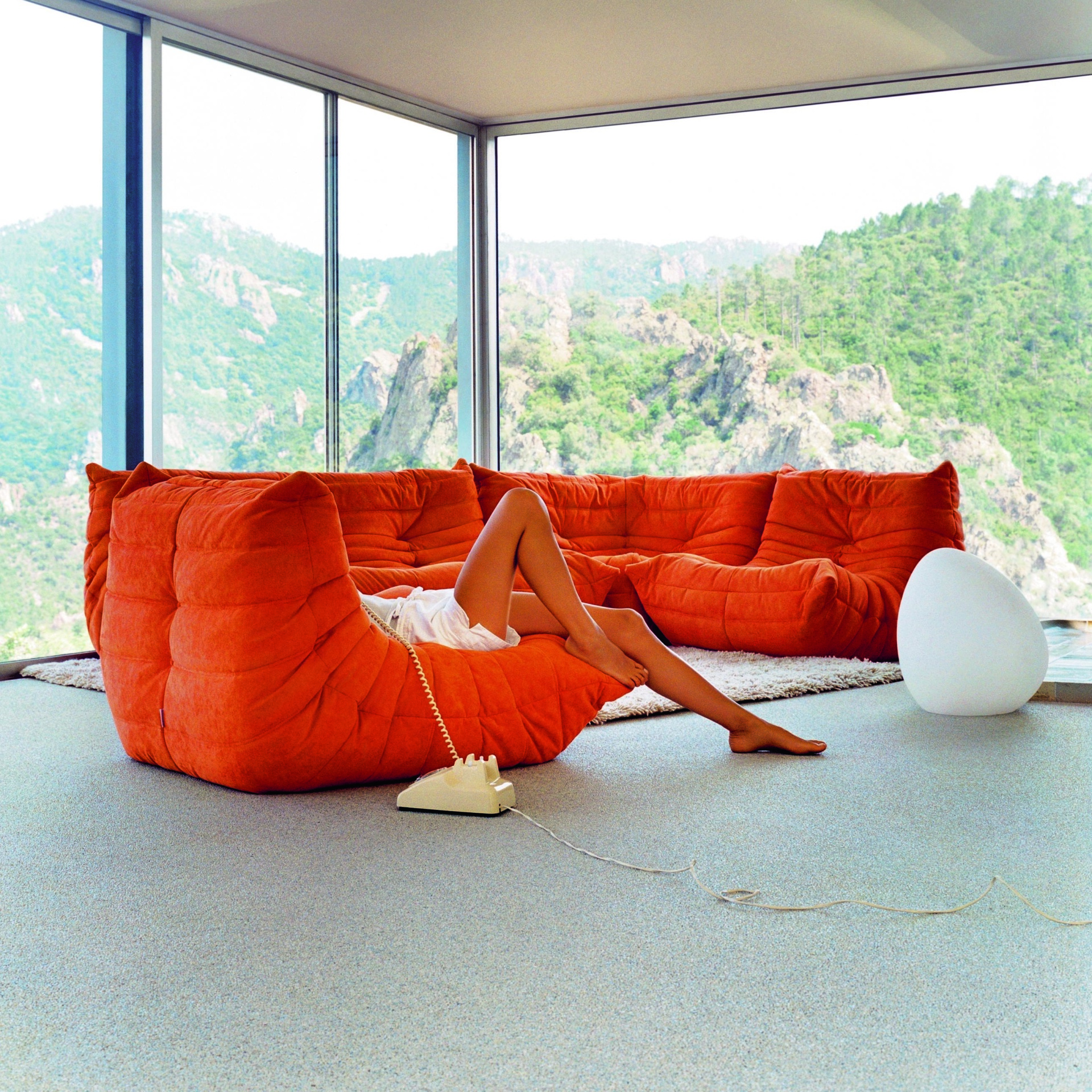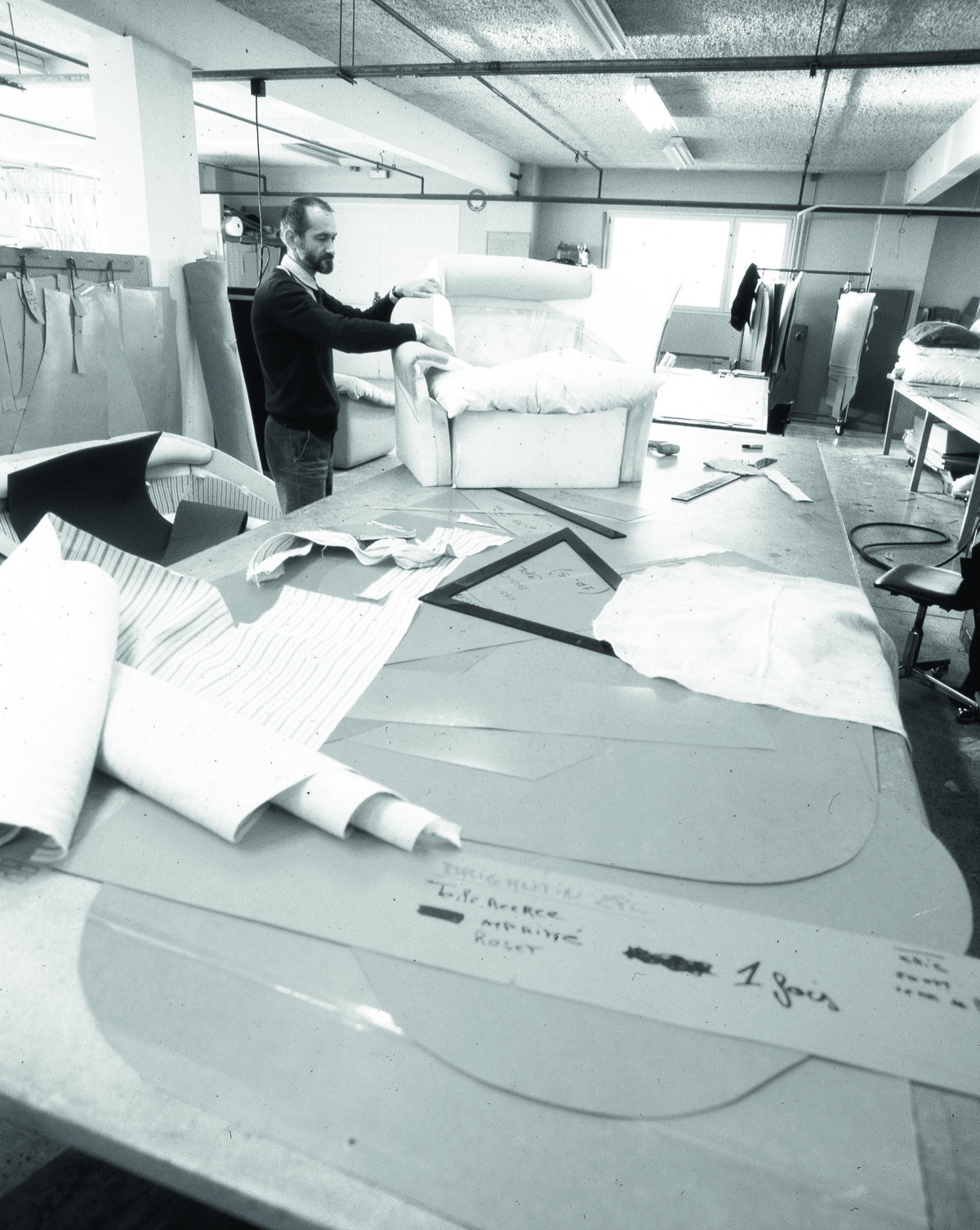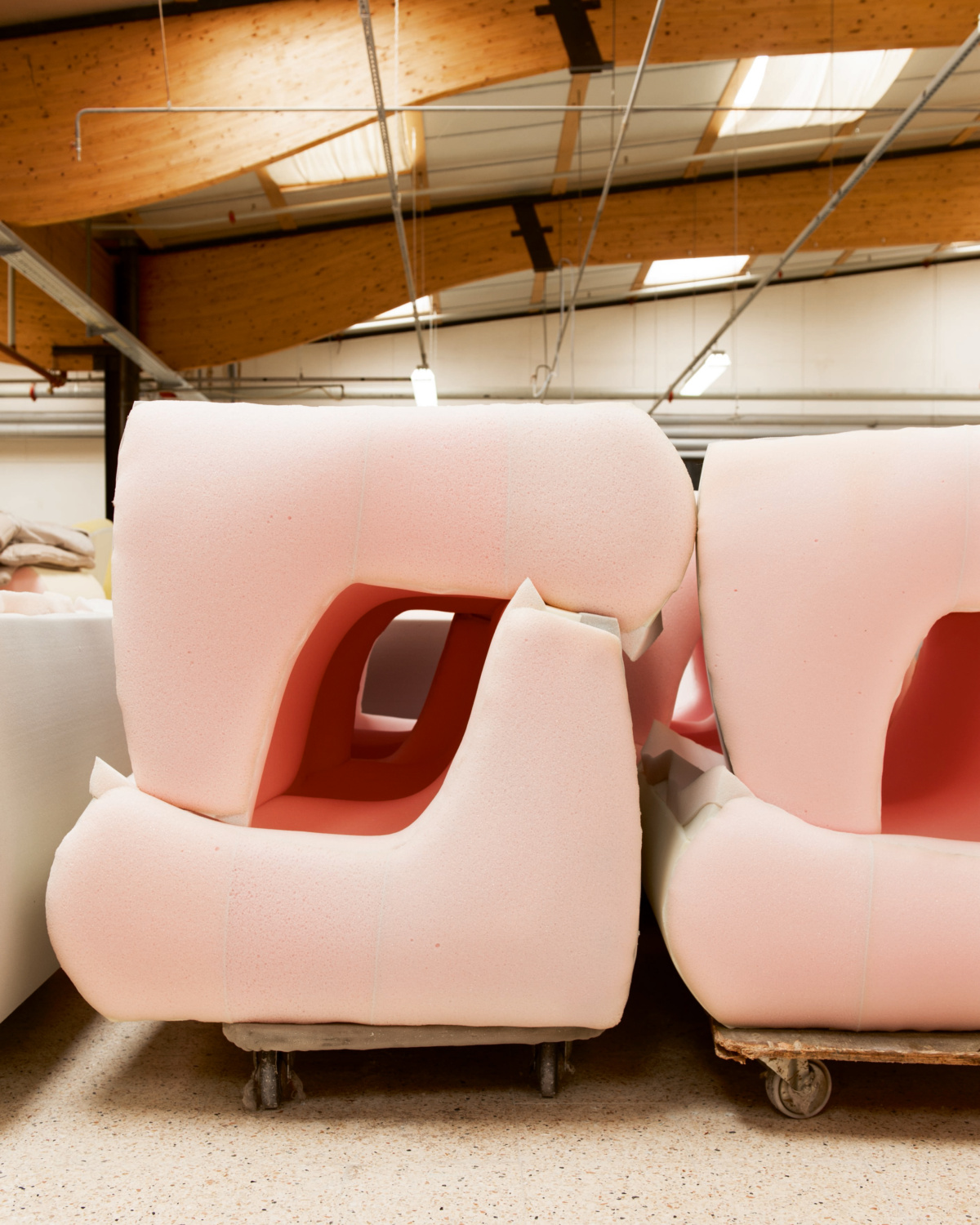Through 50 years of continuous production Togo has gone from being perceived as a radical new approach to seating to a trendy Instagram staple in quarantine-era cozy apartments—becoming a design icon and an archetype for the low, slinky ’70s sofa.
Today there are more than 1.5 million Togo sofas around the world, according to Antoine Roset, global marketing director of Roset Group. They can be spotted in Lenny Kravitz’s Paris abode, in designer Kelly Wearstler’s kid’s room in Beverly Hills, and, in case you needed proof of its social media clout, in the living room of Clara Cornet, Instagram’s head of strategic fashion and beauty partnerships.
“The Togo line is an extremely versatile collection and suitable for any environment—from residential to commercial to hospitality,” says Simone Vingerhoets-Ziesmann, executive vice president of Ligne Roset Americas.
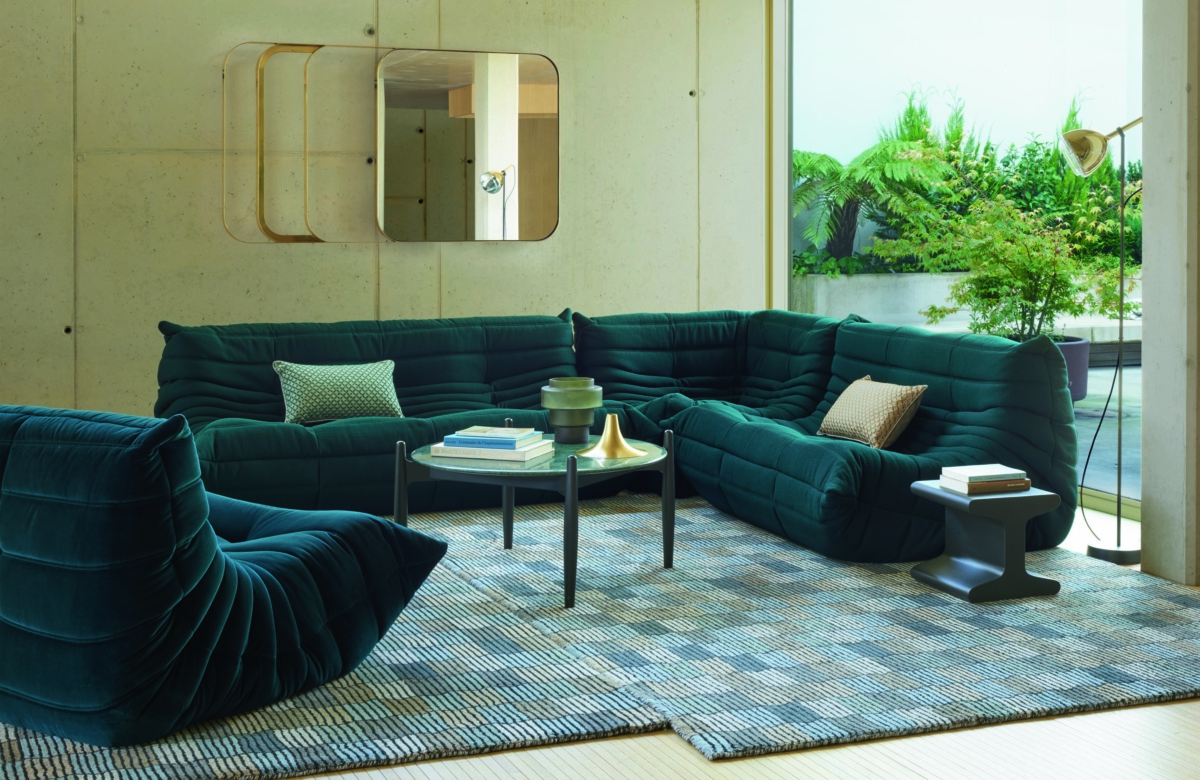
In the late 1800s the Roset Group was founded as a manufacturer of turned beechwood parasol handles and walking sticks. A century later, in a world transformed by war and cultural shifts, Jean Roset inherited the family business and decided it was time to diversify. Jean met the designer Michel Ducaroy, who created the brand’s first few collections of contract furniture for hospitals and residence halls.
With the dawn of the 1970s creativity was surging, not just in furniture but across society. Hippie culture, the rise of feminism, and new art movements like land and conceptual art all gained momentum. Generally people were getting more experimental—and Michel was, too. The designer began exploring foam and polyester quilting in new seating designs.
The Togo sofa came to be in 1973—the same year Ligne Roset launched as a consumer brand. Michel modeled the sofa after “a tube of toothpaste folded back on itself like a stovepipe and closed at both ends,” in the designer’s own words.
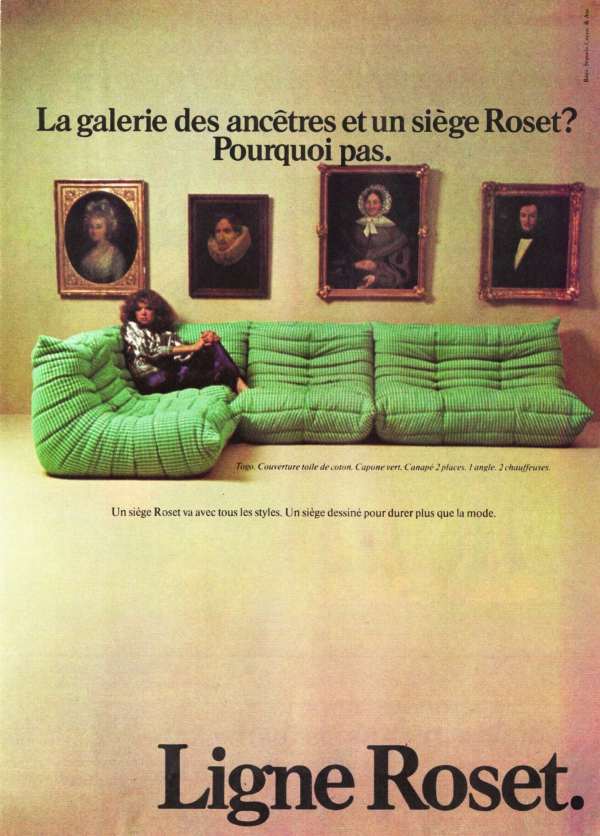
An original Togo ad from 1974 boasts its versatility and lasting design. Photo by Roux-Séguéla Agency Via Ligne Roset Archives
Michel introduced Togo at the Salon des Arts Ménagers in Paris that year. Although it earned the René Gabriel prize for “innovative and democratic furniture,” the public did not immediately fall in love. “At the early beginning in 1973 and ’74 Togo was not a success at all. It was only after a few years that it started to become more and more successful,” Antoine says.
Arriving on the scene just after Mario Bellini’s Camaleonda (1970) and Roche Bobois’ Mah Jong Sofa (1971), Togo joined the ranks of sofas that were undeniably groundbreaking. It is low—really low—and its folds and ergonomic curve give it a look not unlike an insect. Squishy, big, and without a base, the sofa subverted consumers’ cushion-and-arms expectations.
“Togo was revolutionary at its launch since it resembled changes in society and changing social behaviors in the ’70s—the breakout of free spirits and questions against the status quo,” Simone says. “During a time when furniture was formal and conservative Togo was a revolution, a symbol for people to enjoy ultimate comfort and design without any formalities and social requirements.”
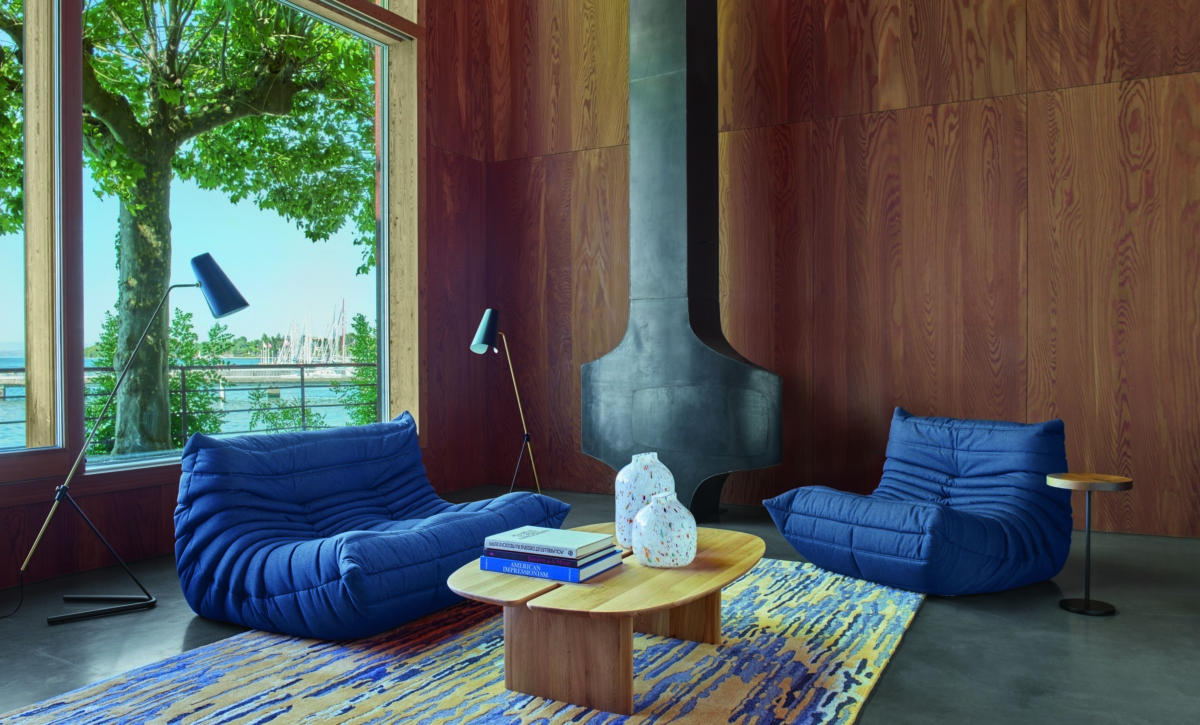
“Togo is one of those all-foam models that made Ligne Roset famous. It became an icon for us and helped us to always push forward in terms of product develop- ment,” Antoine says. The sofa is shown here in Jean Brut.
On Togo’s squishy foam cushions, uninterrupted by hard buttons or arm rests, you are invited to flop, roll, invert, dangle, lay, or just sit. But there are also more practical reasons for Togo’s popularity. “Its durability and modularity are two important factors,” Antoine says.
It’s true that its pleats don’t wrinkle (no matter how you flop or roll), and its various sizes make Togo adaptable to any space. In 2007 Ligne Roset launched Togo Junior, a smaller version of the same iconic sofa, perfect for the children of discerning, design-loving parents.
Its popularity has inspired many copycats, but none are able to achieve Togo’s welcoming and sophisticated look and feel, mostly because of the unmatched degree of care that goes into every sofa. In the factories of Briord, France, in the foothills of the Jura Mountains, a surprising number of hands come together to manufacture Togo. First the foam pieces are cut and adhered to form the body of Togo—large and static but lightweight, malleable, always returning to its original form.
- Togo’s coverings are sewn using UV ink patterns and upholstered through an elaborate multi-step process in Ligne Roset’s factory.
- Several different pieces of foam are glued together to form the dense and squishy body of the Togo sofa.
The covering and upholstery come next—and are in large part what sets Togo apart. “The cover is really specific and requires an important know-how in stitching to be well done,” Antoine says. “About 10 different production steps are required for a simple Togo, which represents many hours over the course of a few days. It can’t be done in one day due to certain steps.”
Counterfeit sofas claiming to be reupholstered authentic Togos are easily debunked. In a side by side comparison, the true Togo is always evident thanks to the meticulous craftsmanship of Ligne Roset’s French manufacturing workshops, perfected in the half-decade of Togo’s production. “The craftsmanship, quality, and unique manufacturing process of Togo becomes even more important and rare in times of fast fashion and fast design, where products are produced that show no longevity and are not sustainable,” Simone says.
To prove the value of craftsmanship and the longevity of Michel’s original design, Togo has been sold without discontinuation for 50 years. While some of the most recognizable designs have fallen out of fashion, been replaced, or been cycled through with the times, Togo has remained a constant item in Ligne Roset’s catalog.
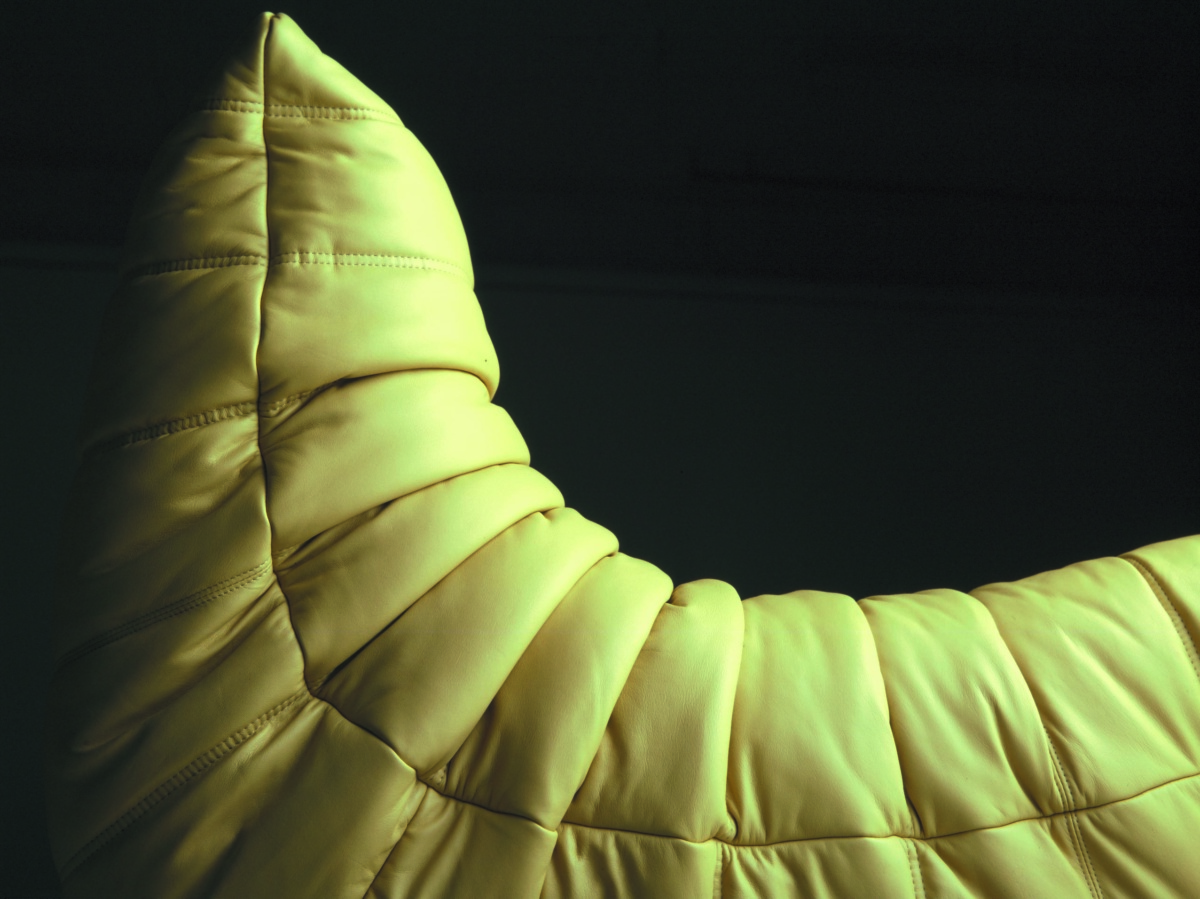
Togo is celebrating its 50th anniversary with two special edition coverings—Atom by designer Raf Simons for Kvadrat and La Toile du Peintre by a fellow French company, Pierre Frey, reinterpreting a work by contemporary painter Heather Chontos. “Raf Simons and Heather Chontos are creatives who are both innovative and provocative at the same time, which aligns with the brand’s value of non-conformism,” Simone says.
Pointillism in expressionist artwork serves as the inspiration for Atom, whose pinpricks of color dispersed throughout the covering add up to its distinctive colors—birch, labradorite, and confetti. Belgian fashion and lifestyle designer Raf Simons, a frequent collaborator with Kvadrat, is behind the selection. Raf, who closed up his eponymous fashion brand to join Prada as co-creative director, is known for his individualistic style, using color with purpose to emphasize bold silhouettes.
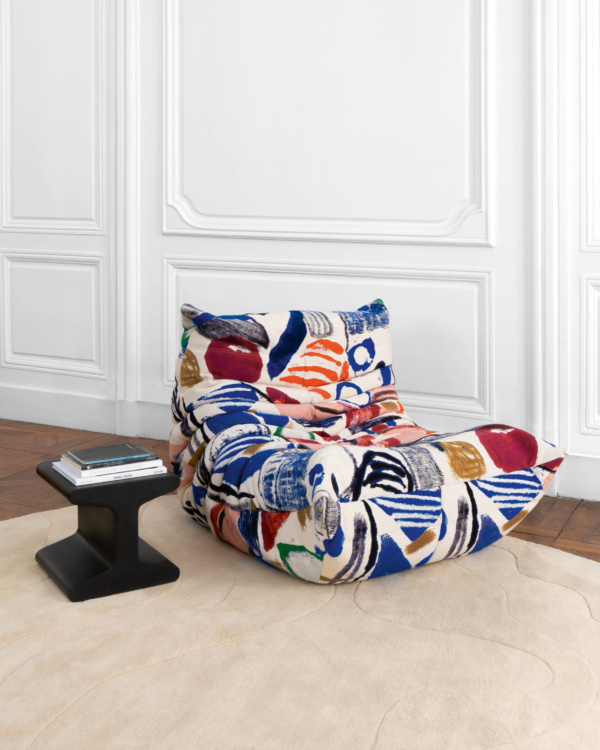
On the other hand, Pierre Frey’s La Toile du Peintre is bold in and of itself—a bright, graphic pattern reinterpreting a work by Heather splashes across Togo’s folds. It is large and undeniably joyful: a proclaimed “ode to artistic expression.” La Toile du Peintre will be available in Ligne Roset showrooms through the end of 2023 in honor of the 50th anniversary.
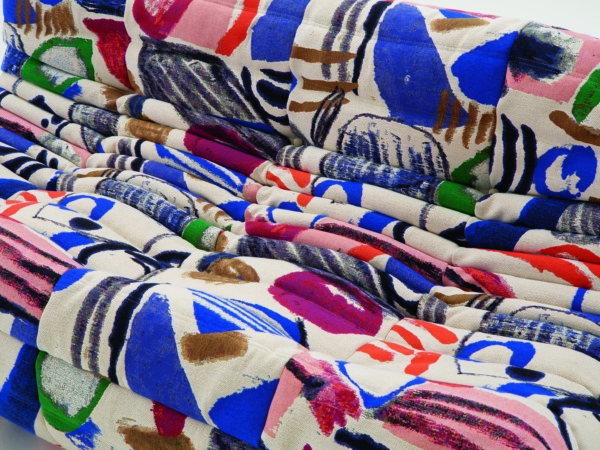
La Toile du Peintre is a limited 50th anniversary fabric from Pierre Frey, inspired by the contemporary paintings of artist Heather Chontos.
Looking to the future Ligne Roset aims to reduce its carbon footprint—beginning with a denim Togo covering that is made from nearly 50% recycled materials. “We will continue to bring new fabrics and materials to this collection and also work on how to integrate more and more sustainability into Togo,” Antoine says.
It’s easy to say we can expect to continue seeing Togo splashed across Pinterest boards and aspirational Instagram accounts; the design is sure to stay around for years to come. Our collective yearning for comfort in the home makes Togo, a classic now, also a companion for life ahead.
A version of this article originally appeared in Sixtysix Issue 10 with the headline “A French Original.” Subscribe today.
